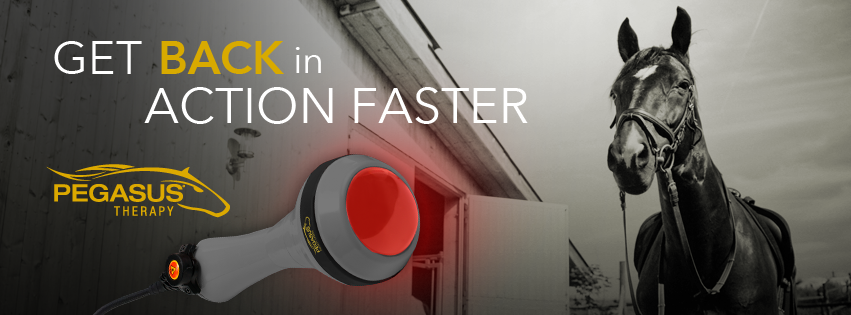Discovering the Holistic Approach of Equine Therapy for Personal Development
Assessing the Performance of Laser Therapy in Equine Therapy for Injury Rehab
The examination of laser treatment's efficiency in equine injury rehab pivots on several elements, consisting of recovery time, discomfort mitigation, and cells regrowth. Veterinarians regularly observe superior outcomes with laser therapy compared to traditional methods, placing it as a crucial element in equine treatment.
Recognizing Laser Treatment
Laser treatment has ended up being a crucial device in vet medication, especially in the treatment of equine conditions. Understood for its non-invasive nature and efficacy, laser therapy includes the application of details wavelengths of light to promote tissue repair and lower inflammation. This restorative technique is progressively preferred for its capability to speed up the recovery process in equines dealing with a variety of musculoskeletal injuries and chronic conditions.
The key device behind laser treatment is its capacity to enhance cellular features. In addition, laser therapy advertises vasodilation, improving blood circulation and oxygen shipment to broken tissues, hence speeding up recuperation.
In equine medication, laser treatment is especially helpful for problems such as tendonitis, osteoarthritis, and wound healing. The technique is lauded for its pain-relieving residential or commercial properties, enabling horses to restore mobility and feature a lot more swiftly. Vets likewise value its very little negative effects compared to other treatment methods, making it a trusted and secure alternative for equine treatment.

Exactly How Laser Treatment Functions

Upon absorption, these photons trigger a collection of biochemical changes, enhancing mitochondrial feature and leading to enhanced adenosine triphosphate (ATP) production. This increase in ATP speeds up mobile metabolic process, promoting cells repair and regrowth. In addition, laser therapy modulates inflammatory responses by impacting cytokine degrees and reducing oxidative stress and anxiety, therefore minimizing pain and swelling.
One more substantial element of laser treatment is its function in improving microcirculation. The therapy promotes vasodilation, improving blood flow and oxygen delivery to damaged cells (Equine Therapy). This facilitates the elimination of cellular debris and supports the expansion of fibroblasts and collagen synthesis, essential for wound recovery
Scientific Proof
The efficacy of laser therapy in equine therapy has been validated with numerous professional studies, showcasing its healing prospective throughout a range of conditions. A research study look at here performed by Turner et al. (2012) showed that horses treated with low-level laser therapy (LLLT) for ligament injuries showed increased recovery contrasted to those getting conventional therapies.
Similarly, research by Johnson and coworkers (2015) focused on equine muscle mass injuries, revealing that laser therapy substantially accelerated muscle mass fiber regrowth and decreased muscular tissue stiffness. These searchings for were proven by histological evaluations revealing improved muscle mass cells company. Moreover, professional evaluations have actually shown that laser therapy can reduce chronic problems such as osteoarthritis. A research study by Smith et al. (2018) reported that equines with osteoarthritic joints experienced notable discomfort alleviation and increased variety of movement adhering to a regimen of laser treatment sessions.
Veterinarian Insights

Veterinarians also value the convenience of laser treatment. She aims out that laser therapy can be tailored to the particular demands of each horse, ensuring optimum results.
In addition, veterinarians value the ability to integrate laser treatment with other treatment modalities. This multimodal approach can enhance total treatment effectiveness, supplying a thorough solution for equine rehabilitation. Such recommendations from skilled experts underscore the expanding approval and application of laser therapy in equine medication.
Practical Considerations
A crucial facet of carrying out laser treatment in equine therapy entails recognizing the functional considerations that guarantee its effectiveness and safety and security. view publisher site It is critical to select the appropriate laser device, as different kinds differ in wavelength, power, and penetration deepness. Veterinarians must be fluent in these parameters to customize therapy procedures properly per injury type
In addition, the regularity and period of laser therapy sessions require careful planning to maximize restorative advantages while reducing any type of possible negative effects. Regular surveillance of the steed's action to treatment can assist necessary modifications in the therapy regimen. Establishing a safe and controlled environment throughout therapies is likewise necessary to protect against unintended exposure to laser emissions, which can damage both the equine and the handler.
Training and qualification of employees carrying out laser treatment are paramount to guarantee appropriate strategy and to support safety and security standards. Additionally, maintaining exact documents of each session, consisting of laser setups and observed results, is important for examining the overall performance of the therapy and for making data-driven decisions.
Conclusion
Laser treatment has actually emerged as a reliable technique in equine injury rehabilitation, supplying significant benefits in recovery time, discomfort relief, and cells healing. For optimal outcomes, continual monitoring and customized treatment procedures continue to be vital in leveraging the full possibility of laser treatment in equine treatment.